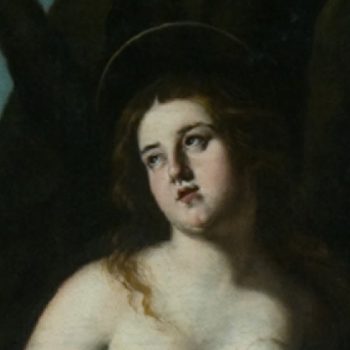Bottle with coat of arms of Grand Master Alof de Wignacourt
This bottle-shaped maiolica pharmacy jar bears the coat of arms of Grand Master Alof de Wignacourt. He commissioned a set of pharmacy jars for the Sacra Infermeria (Holy Infirmary) of the Knights of the Order of St John in Valletta. These most probably came from the workshop of Maestro Bernardino in Venice, pupil of the more renowned Domenego de Beti. On a blue background are painted stylised flowers and foliage in vibrant yellow, brown, and green.











